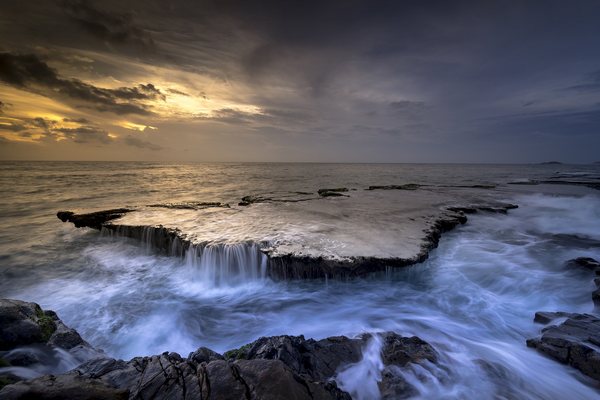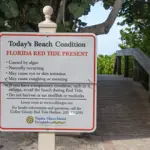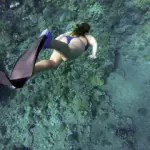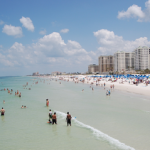
When you first begin to snorkel it’s exciting to see things for the very first time. But you may be wondering when is the best time to go snorkeling. Is it at high tide, or is it at low tide? Plus at what time of day is it best to go snorkelling? Let’s take a look at each of these questions…
When is the best time to go snorkeling? Snorkelling at high tide the water visibility tends to be better. But the water may be too deep to see the bottom. At low tide the visibility can be worse, but the water is shallower and shallow pools are uncovered making it easier to see things. You’ll see different fish and sea creatures at high tide vs low tide.
As an aside, in this article about where to find great white sharks, you may be as surprised as I was to discover some of the places where you find great white sharks! Place number 6 is the one that surprised me the most, but if you live in the States, you may be more surprised at places two, three and four. Especially if you are going to be snorkelling in any of the areas.
The best way to do more diving and snorkeling is to book yourself on a scuba diving liveaboard. You can check the latest and best deals on liveaboards using the following window:
When is the best time to go snorkeling and is high tide or low tide better for snorkeling?
Before talk about which is better for snorkeling, either high tide or low tide, let’s clarify what is meant by each tidal state. High tide is when the sea is at it’s highest level, whereas low tide is the point of maximum ebb or when the sea is at its lowest level.
It is also worth mentioning spring tides and neap tides. With a spring tide, the high tides are higher than normal and the low tides are lower. In order words the swing between high tide and low tide during spring tides is greater.
When you experience neap tides, high tide is lower than the norm and low tide isn’t as low as the norm. Which means that during neap tides the swing between high tide and low tide is much less.
This is important to know for your own safety. During spring tides there is a much greater movement of water.
This means that during the peak period of tidal movement, and depending on where you intend to snorkel, you may need to be careful of significant tidal currents when the tide is advancing (i.e. coming in) or ebbing (i.e. going out).
Snorkelling at high tide
The advantages and disadvantages of snorkeling at high tide include the following:
- Generally speaking the water around the coastline will be clearer at high tide. However, this does depend on what the sea bed is composed from.
- Places that are too shallow to snorkel at low tide will have a larger volume of water covering them, making it easier to snorkel.
- You may find different types of fish and sea creatures are to be found at high tide, as they come to feed at this time. You’ll find there are more predatory fish that will arrive on the incoming tide to feast on what they can find around the coastline.
- If you are snorkelling over or around coral reefs, it is safer to snorkel where you’ll have a bigger gap between you and the reef to avoid being cut and grazed.
- At high tide you may find that the water can be too deep where you want to snorkel. If the water is too deep you won’t be able to see what is on the bottom, unless you dive down all of the time.
- At high tide, and especially during a spring tide, you need to be mindful of when the tide will start to go out. This isn’t a problem if you’re snorkeling where there are no tidal currents to affect you. However, if you’re snorkelling where there are strong tidal currents, you don’t want to get sucked out on an out-bound tide.
Snorkelling at low tide
The advantages and disadvantages of snorkeling at low tide include the following:
- Generally speaking, the water visibility will be lower around the coastline at low tide. However, this does depend on what the sea bed is composed from.
- You might find that there are certain places where you won’t be able to snorkel at low tide because the water is too shallow.
- At low tide you’ll discover other creatures that come out due to the low tide. This is because it’s safer for them to come out at this time when the predatory fish have disappeared with the out-bound tide.
- Low tide will give you a better opportunity to snorkel in the shallow pools that are exposed only at low tide. This will provide a better opportunity to see the sea creatures below.
- If you are new to snorkeling and just a beginner, it might be better to snorkel at this time and make use of the safe shallow pools.
- Be more careful around coral reefs at low tide as there will be less water between you and the top of some of the reefs.
- One of the benefits of a low tide is that there will be less water between you and the seabed. And assuming the visibility is good, you’ll be able to better see things on the bottom with less water, meaning you won’t necessarily need to dive down to see it.
- You won’t need to worry about out-bound tidal currents when you’re snorkeling on a low tide. But having said that, and especially on a spring tide, you may need to consider any in-bound tidal currents and where these may push you.

Snorkelling at high tide vs low tide – consider trying both if safe to do so
The truth of the matter is that in reality there’s not too much difference between snorkelling at high tide or low tide. So long as you consider carefully any tidal currents beforehand.
If you do this, you should be able to enjoy the experience. My advice would be to try both. Both high tide and low tide are equally as good, as you get to see different creatures and a different perspective on the sea bed and the coastline on each tidal state.
You also need to take account of the tidal range of where you intend to snorkel. If where you’re snorkelling there’s not much of a water-height difference between high tide vs low tide (i.e. somewhere like the Caribbean), it will make little difference whether you snorkel on either tidal state.
What is the best time of day to snorkel?
There are a number of considerations to take account of when choosing the best time of day to snorkel. These include the following:
- The tidal state, i.e. high tide or low tide as already explained above. If you want to snorkel at say low tide, the timing of low tide will dictate the time of day you can snorkel.
- Your sensitivity to the sun and whether or not you’re going to whether some form of sun shield, like a wetsuit. I would not recommend you snorkel at or around midday, as this is when the sun is at its strongest. Unless of course you’re wearing a wetsuit or a rash-vest to protect your skin.
- Don’t snorkel too close to sunrise or sunset as this will make it difficult to see into the water. Ideally you need the sun fairly high in the sky to see clearly to the bottom.
Please don’t forget to take a look at this article about where to find great white sharks, you may be as surprised as I was to discover some of the places where you find great white sharks! Place number 6 is the one that surprised me the most, but if you live in the States, you may be more surprised at places two, three and four.
I hope you enjoyed this article about Is it better to snorkel at high tide or low tide
I’d love to hear from you. Tell us about your adventures of diving and snorkelling. Please use the comments section below. Please also share your photos. Either from your underwater cameras or videos from your waterproof go-pro’s!
If this article hasn’t answered all of your questions. If you have more questions either about snorkelling or scuba diving (or specifically about Is it better to snorkel at high tide or low tide), please comment below with your questions.
There will also be many more articles about scuba and scuba diving safety tips (and on snorkelling too) for you to read and learn about this fabulous sport.
Have fun and be safe!




